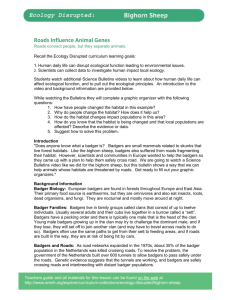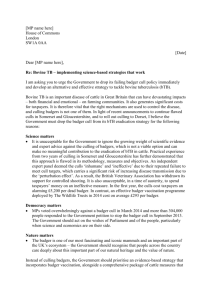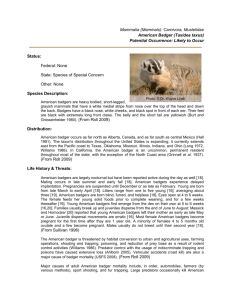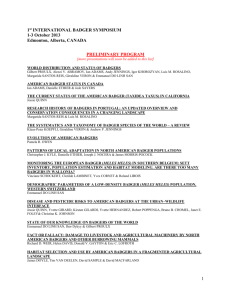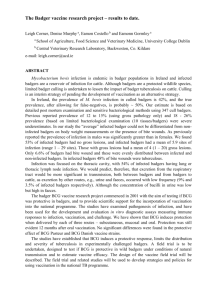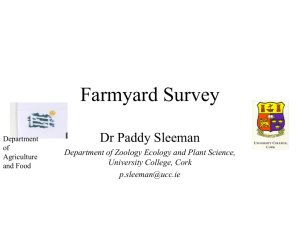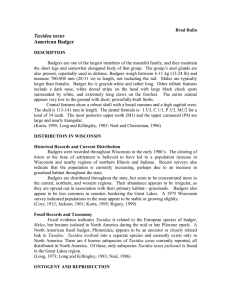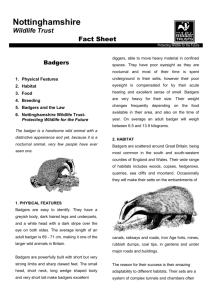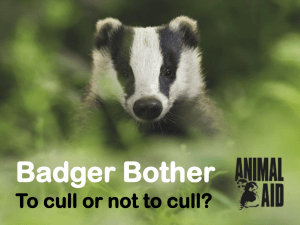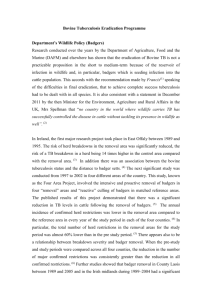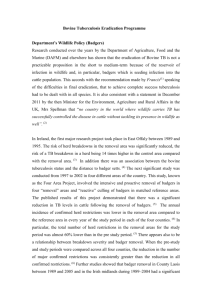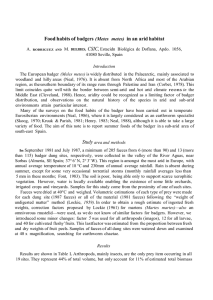American Badger/ Human Interactions and the Negative Effects of
advertisement
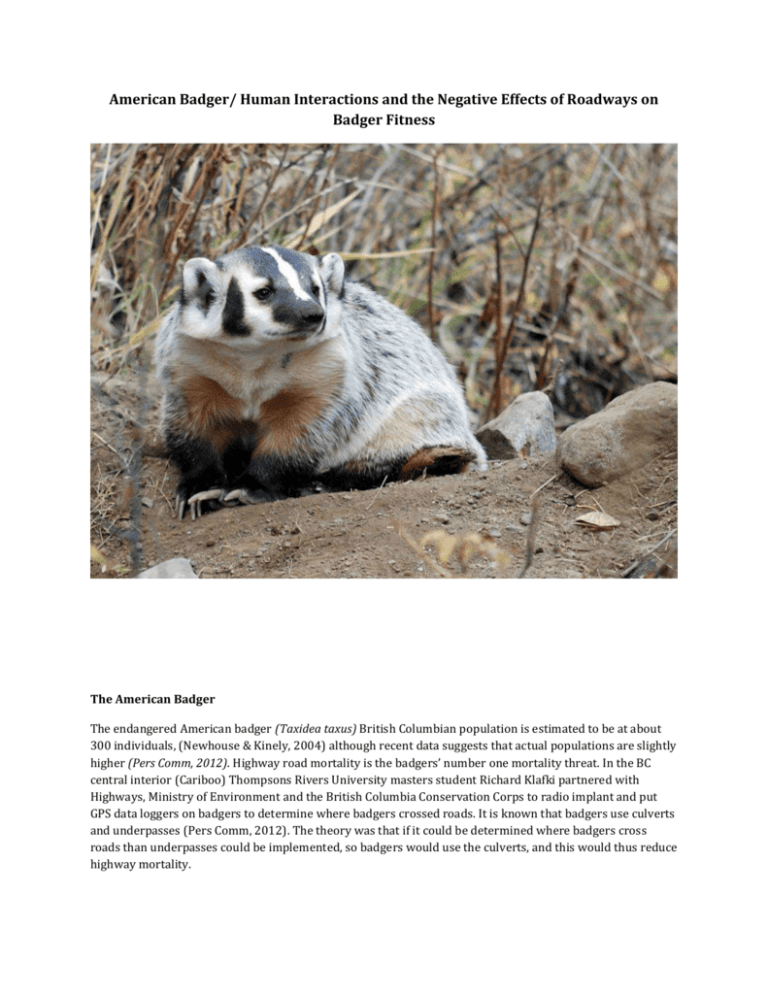
American Badger/ Human Interactions and the Negative Effects of Roadways on Badger Fitness The American Badger The endangered American badger (Taxidea taxus) British Columbian population is estimated to be at about 300 individuals, (Newhouse & Kinely, 2004) although recent data suggests that actual populations are slightly higher (Pers Comm, 2012). Highway road mortality is the badgers’ number one mortality threat. In the BC central interior (Cariboo) Thompsons Rivers University masters student Richard Klafki partnered with Highways, Ministry of Environment and the British Columbia Conservation Corps to radio implant and put GPS data loggers on badgers to determine where badgers crossed roads. It is known that badgers use culverts and underpasses (Pers Comm, 2012). The theory was that if it could be determined where badgers cross roads than underpasses could be implemented, so badgers would use the culverts, and this would thus reduce highway mortality. Badger Behavior Badgers are meso-carnivors which are mostly solitary except in the summer breeding season. They are extremely curious creatures and will come out of burrows to investigate who is making noise outside their burrow. They then return to the safe confines of their burrow or sometimes waddle away. A common misconception with the American Badger is that they are aggressive. They are usually timid and curious creatures unless, like any animal they are cornered or trapped. If so badgers will growl like a 900 pound grizzly bear; which puts the hairs up on the back of most people’s neck. When trapping badgers for a masters student to put GPS backpacks on them, once you grabbed the badger by the scruff of the neck and under the butt the badger would relax, they seemed to just give up like ‘you got me and I can’t get away so I am just going to chill’. Badgers have relatively sharp teeth, but only use their long claws for digging and never try to scratch. The vet that was with us at the time, an experienced field vet, said badgers are much easier to handle than the average house cat. Badger Road Crossing Behavior While conducting road crossing behavior studies through winter tracking, radio telemetry, GPS backpack data loggers and Reconyx hunting cameras on culverts, it was found that badgers will go out of their way to use culverts to safely cross the road (Pers Comm, 2012. I hypothesize that culverts resemble a badgers burrow, where they feel safe and secure, making a badger feel safer in a culvert than crossing a road way. Roads not only effect badger connectivity, mortality and population fragmentation, but also provides excellent burrow habitat for badgers. Badgers like to burrow in aeolian soil deposits on hillsides. Aeolian soils are easy to dig in and have apparent ‘moisture wicking properties’ that badgers enjoy (Pers Comm, 2011). Road cut banks provide a steep slope for a badger to dig into, so the soil falls away from the opening of the burrow when a badger digs, thus making it easier for them. Badgers that use road cut banks are often then more susceptible to highway mortality due to the close nature of the animal to the highway. Numerous times in the Cariboo female badgers have chosen their natal site on cut banks less than 4 meters from the edge of major highways! Badger kits are unexperienced with crossing roadways and are even more susceptible to highway mortality. Roadways are mainly responsible for badgers’ now endangered status. The creation of underpasses and culverts in high badger mortality areas are paramount for the recovery of BC badger populations. Readings http://www.arlis.org/docs/vol1/69415913/newhouse_edited_final_feb_28.pdf http://www.badgers.bc.ca/pubs/EK_badger_2004.pdf http://www.sgrc.selkirk.ca/bioatlas/pdf/The_Ecology_of_Badgers_in_SE_BC.pdf References Newhouse, N.J, Kinely, T.A, 2004, Ecology of American Badgers near Their Range Limit in South-Eastern British Columbia, Ministry of Environment, Invermere, British Columbia. Personal Communication, 2012, Richard Klafki, R.P. Bio, TRU Masters Student Personal Communication, 2011, Roger Packham, R.P. Bio, Senior Ministry of Environment Ecosystems Specialist Photo Credits Richard Klafki, R.P. Bio
